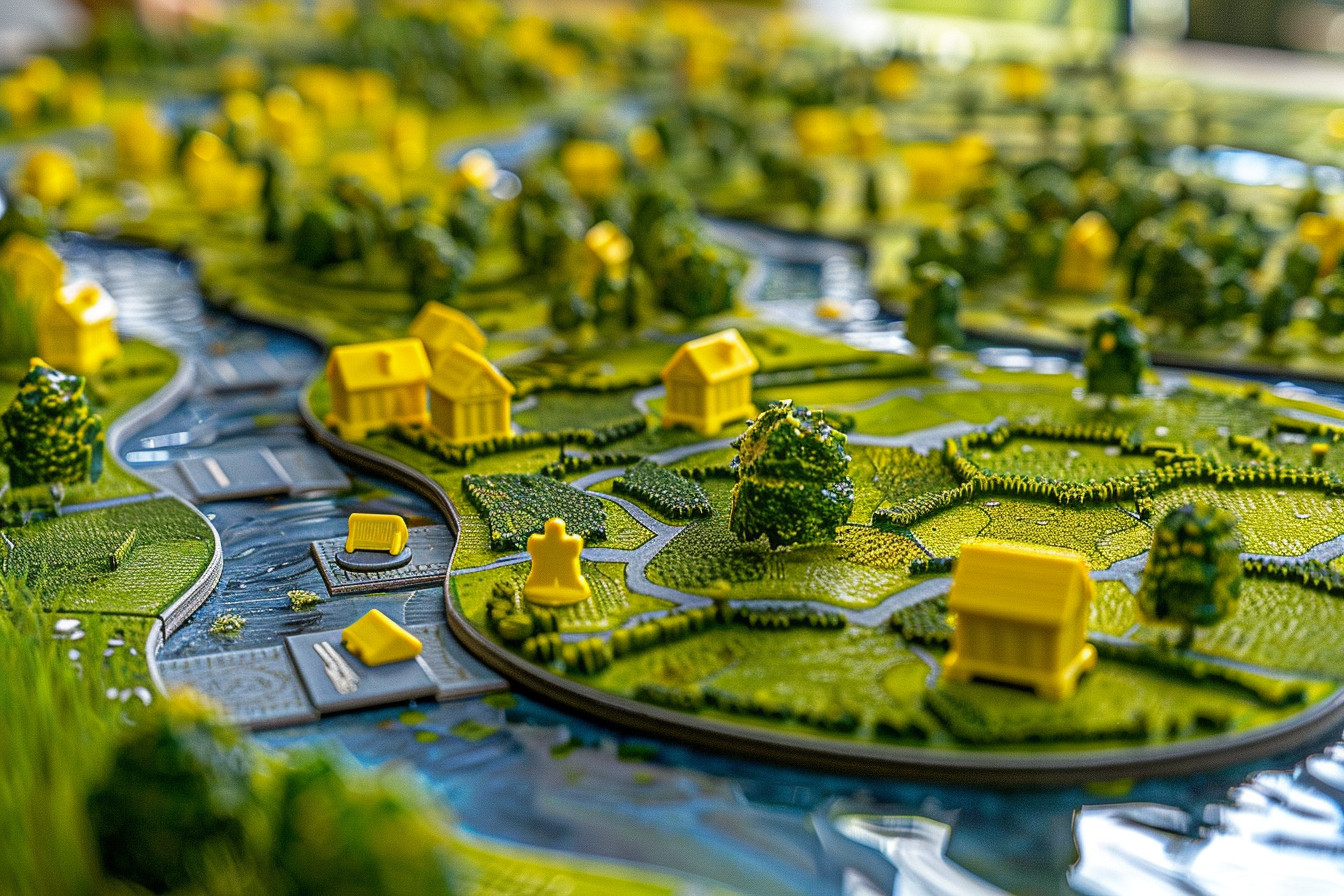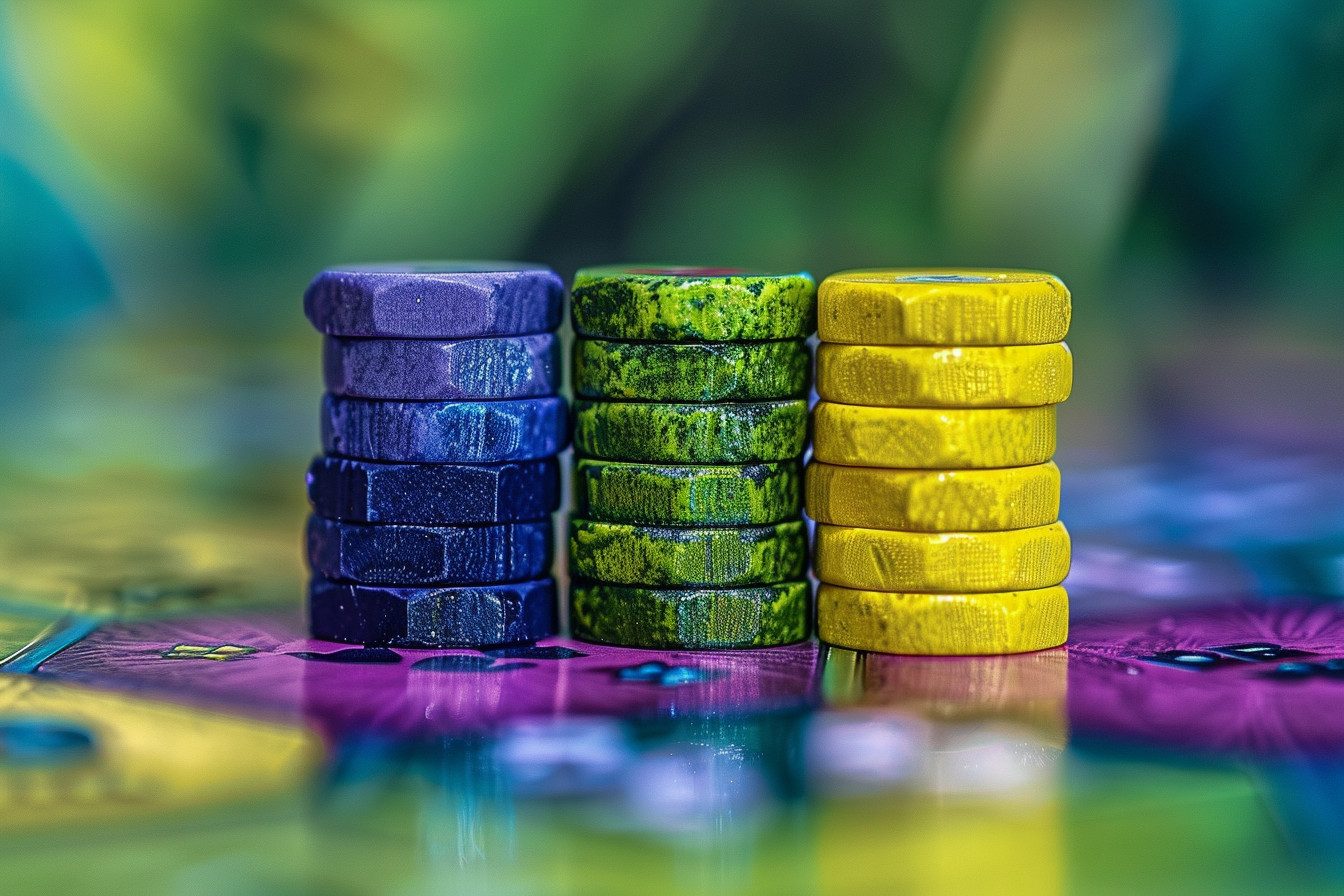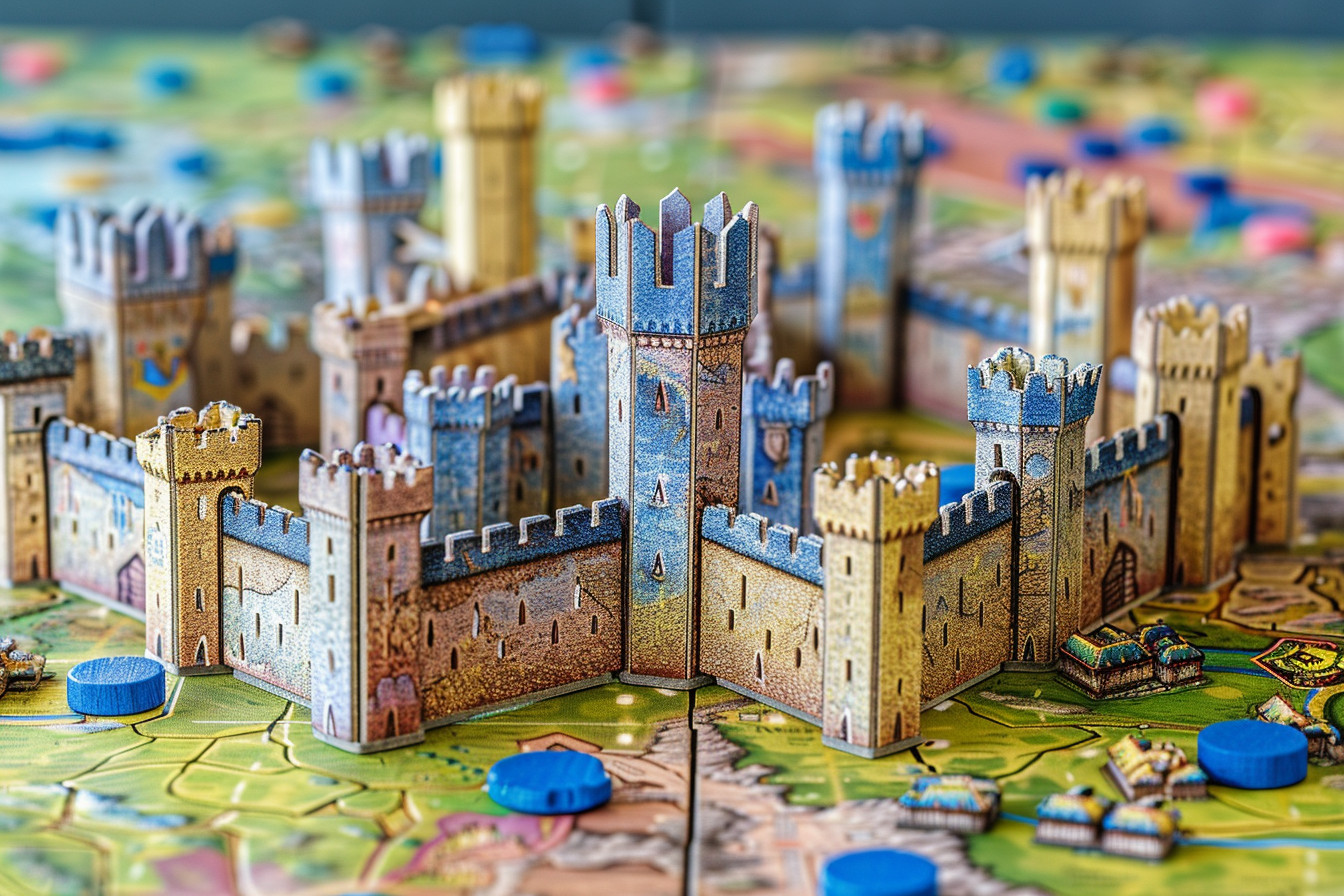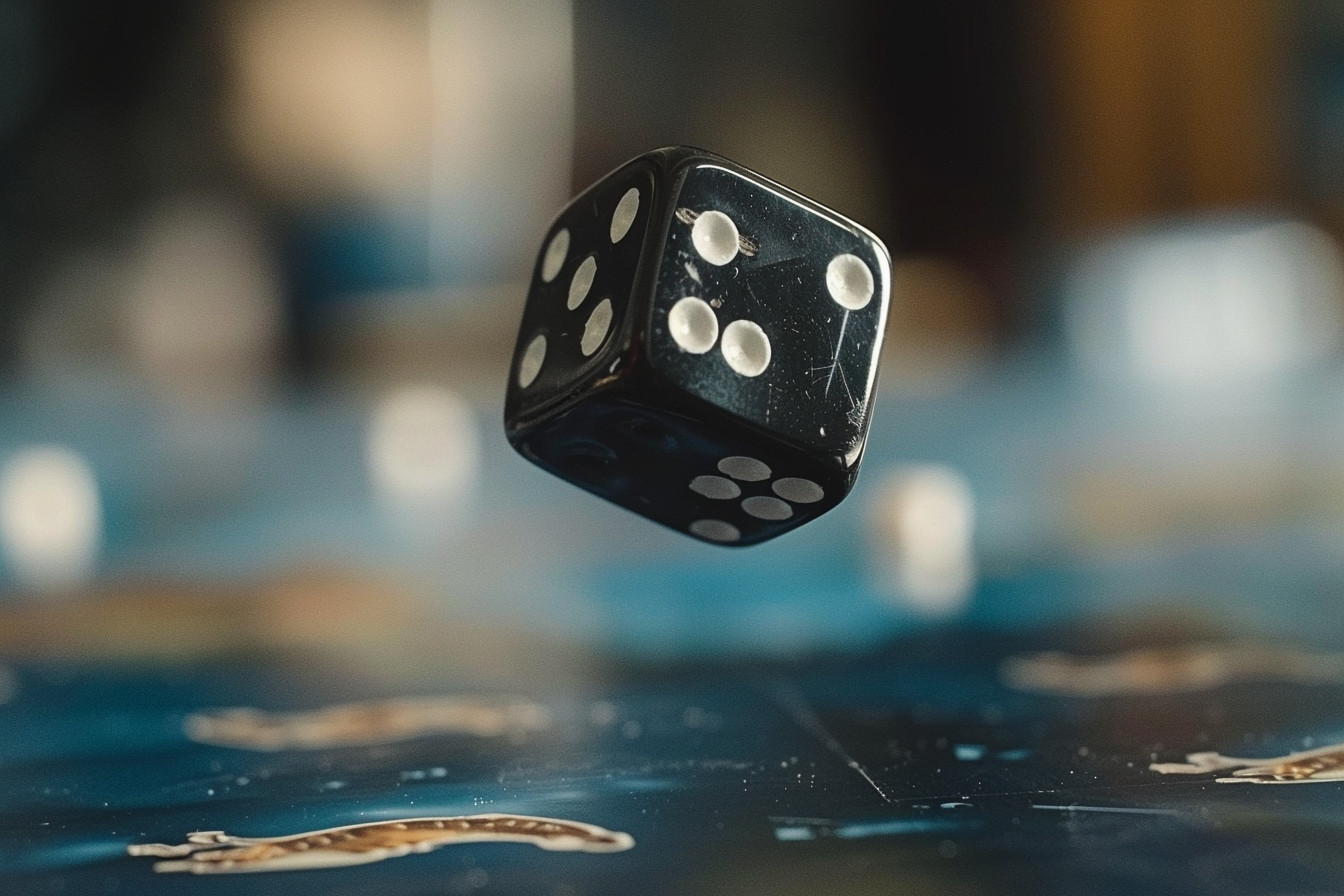Scythe is a game for board game enthusiasts. It fascinates, baffles, and questions their basic terms. Set in an alternate-historical 1920s, Scythe : the Board Game skillfully weaves together elements of strategy, resource management, and area control. For those who take the plunge into this intricately-wrought world it is an overwhelming experience.
Created by Jamey Stegmaier and published by Stonemaier Games, Scythe has turned the tables in my own board game collection ever since its debut, providing countless hours of intense and thrilling gameplay. With the game’s stunning artwork by Jakub Rozalski, you get pulled right in. The visual spectacle isn’t merely backdrop; itathedecomes part of the game, and each subsequently feels like an epic saga. The battle lines are drawn across a sprawling map of Europa with its various territories on it, as well. Each one has its unique strategic relevance. With its pastoral landscapes and mechanical bears plodding alongside grain reapers, the game launches you into a history that merges history and vision of the future together.
The act of playing a game like Scythe is like conducting a symphony in which every move has been meticulously scored out; yet in just a moment’s notice, you must be ready to improvise. Yet the game supports 1-7 players, so it is suitable to act as a flexible tool for both group play and solo modes. Whether you’re forging alliances, fighting for control or wrestling with resources management, Scythe will force you to balance strategic foresight and tactical acumen.
When I first played Scythe, I was amazed by how deep and complicated the action looked. Each of the factions brings its own unique abilities and starting circumstances. That means no two games will go the same way. Asymmetry means that each time you play offers new challenges and strategies. I once played a particularly close and tense game. I was the Scandinavian Kingdoms, putting my strategy into expansion and management of resources, only to be frustrated by my friend’s cunning military move with the Crimean Khanate. Alternative and unpredictable interactions such as this is one major attraction of Scythe, I believe. This is a game that never gets old.
Setup
Getting Scythe ready for play is an adventure in itself. We now begin to realize just how grand a narrative will come out of this game. The process, although detailed, is also part of the charm and anticipation. Start by laying out the game board. This is a beautiful construction, with many potential strategies within it. Every player moves over to a faction mat and player mat, which between them determine where you start, what resources you’ve got at the start and what your Unique Abilities are. The same mats also model your capacity for Economic Actions.
Faction mats are one of the things I most enjoy about setup. Each mat reveals a different faction from Europa, a unique position on the continent to start with and special abilities unique to that power.
Then you place the starting goal cards and encounter tokens on the board, adding an extra layer of objectives and surprises to keep the game feeling fresh. Drawing an objective card might even shift your entire strategy. A game I recall was one where my objective was to control three farms, which changed the whole nature of what I was doing. By then, requires were commanding an army and getting to work on new resources continually supplied violently by its own frontiers.
Lastly, establish the popularity rankings, influence token deck and battle deck. Each player is given a set of battle cards, and the game begins by determining who gets to go first. This is usually done in our group with a slice of good-natured humor like finding who used a piece of machinery last—reference to the game’s thematic roots.
Setting Scythe up may look complicated at first, but once you learn where all the components go and why they are there, this kind of ritualistic initial stage transforms into something that sets an atmosphere for deep thinking ahead.

Scythe’s traditional gameplay might be overly familiar, but the reality is that every turn offers fresh challenges and strategies to explore is unparalleled. After all, this game is about managing resources as well as territories, building structures and deploying mechs, with an eye (both vigilant and menacing) for what your opponents are up to.
For each round, players select one action from their player mat. Each mat is split into four sections, with both top and bottom actions offered in each. The top actions are usually straightforward, involving as they do resource production, movement or the barter of goods; however, folds are more complex, enabling players to build structures and plant mechs, take action upgrades or recruit new members of the band.
This duel-action system demands careful planning and seamless conjunction of events. I can remember a game where I put a movement on a board just as I lay my mech token. I then stole a surprise territorial win, away from an opposing player by dragging into my favor its original capture!
Scythe combat is another layer of strategy. It’s not just about who has the most power; it also involves bluffing and out maneuvering your opponent on the field of conflict. Each player secretly picks a level of power to commit, as well as any combat cards that they want to use. This design induces suspense and randomness, since even their opponent’s level of costs is never certain.
In one memorable battle, I bluffed with a low commitment of force, making my opponent overcommit thereby wasting valuable resources — which then left him open to an attack from another player. The encounter tokens scattered throughout the game board insert a narrative element into every game. When a player moves into a space with an encounter token, he draws a card and must make a decision that typically involves trade-offs between resources, popularity and other benefits. These encounters can seriously affect your strategy. I recall an encounter where I was forced to choose between either receiving a large amount of resources or nurturing my popularity, and such a simple decision wound up settling the course of events in this game.
In Scythe, you can secure a victory by achieving a combination of things: possessing different objectives, controlling territories and harvesting resources as well as maintaining your popularity level. When one player puts down the sixth star in Trump Track, they win. This can be achieved in many ways – such as winning a battle, fulfilling objectives or building structures. However, with the game’s diverse victory conditions, there’s always more than one path to victory; things are never left predictable or static.
Pros
Scythe is a much-loved modern board game classic, and rightly so. The game’s major advantage is its asymmetry. Each faction and player mat combination gives a different feel to your game, so no two games with the same setup are ever played through twice.
This variety ensures that Scythe will have a lasting place in every gamer’s collection. The asymmetry makes it quite hard to get bored with Scythe. The depth of tactics and strategy is also a huge plus. A game of Scythe requires players to think several moves ahead, balancing current needs against long-term objectives. Those who are not prepared to plan must look elsewhere: to master Scythe, one needs excellent resource management skills, powers of territorial control in the face of overwhelming odds, and an effective naval battle system intertwining with ground armies.
Production values in Scythe are second to none. The game’s high-quality components — from its beautiful, detailed miniatures to the currently stunningly illustrated board and cards — emanate luxury and precision. This gives players an immersive experience which is unrelated to whether they are winning or losing at the time; every game feels like a journey into this meticulously crafted world. When I first opened up my Scythe box and saw the intricate design of those mechs, and the lush board /card art… Well, I was overwhelmed with awe at what it all looked like.
Still, Scythe has a decent learning curve relative to how complex it can be up front Its rules are logical and well laid out, although there is a ‘tangle’ of them in each game set-up When you understand the basic mechanics, however, everything goes smoothly from there.
Cons
Despite these many strengths, Scythe is not without its flaws. One of the most obvious cons is how arbitrarily complex and lengthy a game it may be.
Scythe has a steep learning curve. Because of all the components and rules that come with it, to new players it can seem daunting. The complexity makes initial setup slow and clunky; playing through a game feels like wrestling in cotton wool for many turns I’ll never forget the time I first taught my friends Scythe: the game took much longer than expected because we were constantly referring back to rules and having them explained. We only just managed to finish before four in morning!
However, the next con is that Scythe may lead to analysis paralysis. Because there’s so much strategy involved players can spend obscene amounts of time staring at the board before playing their next move. This makes games longer and could annoy those who’d prefer a faster pace. We’ve had to put time limits on turns to keep the game going. In a few cases, when people draw games created this way back up into play—that is an interval!
In its reliance on player interaction, the game has its drawbacks. That dynamic interaction is a high point for many, but less experienced players can be left feeling overwhelmed by more seasoned ones. This inequality can affect overall enjoyment: new players may well end up outmanoeuvred and demoralized. In my own gaming group, we have to be very careful when balancing seasoned members against new recruits; the idea is that everybody should have an enjoyable time.
The endgame can also feel abrupt. The game concludes when a player places his sixth star, and it can be abrupt indeed for others caught off guard. This sudden end can be quite disturbing: I remember one game in which the abrupt conclusion left some players unsatisfied. They had not got to realize their plans at all.
Final Thoughts
Not only a board game, Scythe is a complex and fascinating world which challenges its players. A combination of strategic depth, beautiful production values, and immersive play makes this modern board game a hit in every department. In fact every game session of Scythe is a story in itself, filled with tension, surprises and unforgettable moments.
And despite its complexity and the potential for long playing times, the game’s innately balanced design means that every minute, every small step is fraught with meaningful decision-making and engaging interaction. So the thrill maxes out with an unexpected encounter, the satisfaction of executing a well-thought-out strategy without mishap, yet that pact between(players) and playing (the game) alongside (or occasionally against) others–all this fresh excitement will show Scythe to be a game that never grows old.
For those willing to invest the time to learn and master its mechanics, Scythe offers a deeply rewarding experience. It’s a game that grows with you, revealing new layers of strategy and intrigue with each playthrough. Whether you’re a seasoned board gamer or someone looking to dive into a rich and complex game, Scythe is a must-have in your collection.
In conclusion, Scythe shows that board game design is a continuation of art. It successfully integrates strategy, theme and player interaction as a coherent and absorbing whole. Each game is a new adventure, a new challenge, and a new story dying to be told. Are you struggling to prove your mind, hone your tactics and carry your knowledge to new heights? Scythe is the game for you. It’s a game that is sure to leave an indelible mark on anyone who tries it.







